In this article, we will discuss:
- Introduction
- 4 Steps Guide
- 4 Specific Trade Analytics
- Samco My Trade Story
- First Step to Become a Better Trader Today
Trading isn’t just about charts, a bunch of indicators, or that adrenaline rush of seeing green numbers; it’s a journey of constant self-improvement. Every time you initiate a trade, it's a new lesson, a new challenge. You need to develop an eagle eye for details and learn from each win or loss.
And let's be honest, we've all had our share of both. However,becoming a better trader isn't just about chasing the latest hot tip. It's about understanding every part of your trade story and using that knowledge to refine your skills continuously.
So, how do you do this? That’s exactly what this handy 4-step guide explores. Check out the key game-changing techniques you need to follow to not only improve your trades — but also improve as a trader.
Step 1: Pre-Trade Research
Blindly initiating trades in the market can quickly lead to significant losses. Before you enter a position, you need to conduct adequate research about the stock market or the derivatives segment that includes options and futures. If you’re focusing on long-term investing, you must rely on fundamental analysis and financial ratios.
However, if you’re a short-term trader, share market news and technical analysis are your best friends. You can use various tools like candlestick chart patterns, moving averages, Bollinger bands, MACD, RSI, Fibonacci retracement and more. Meanwhile, if you want to try option trading, you need to look at open interest buildup and options Greeks like delta, gamma, theta, and vega.
It’s also a good idea to use screeners to filter stocks and derivatives based on specific technical criteria. This helps you easily sift through thousands of stocks and shortlist the ones that fit your trading requirements.
Step 2: Curating Your Strategy
Once you’ve completed your basic research, you need to curate an actionable trading strategy. Today, various online platforms like Tradingview and Opstra offer tools to build stock and options trading strategies. They not only allow you to curate trading techniques for dynamic market conditions but also facilitate backtesting — which is the process of testing the accuracy of your strategy using historical data.
Backtesting a trading strategy is like rehearsing a play before the actual performance. Much like how actors practice the play to see if the scenes flow well, you need to backtest your trading strategy to see if it would've worked in past market conditions.
Step 3: Executing Your Strategy
After your research is backed by an actionable trading strategy, all you need to do is execute the trade according to plan. To do this, you need a demat account or a trading account and an intuitive trading platform — all of which are offered by modern stock brokers like Samco Securities. If already have a demat account with any of the existing broker, you can also switch to Samco instantly.
Choosing a stock broker is one of the most important trading decisions you’ll make along your journey. Your brokerage partner influences various aspects of your stock trading experience, from the kind of research and tools you can access to the cost of executing your trades. So, ensure that you select a right trading partner.
Step 4: Post-Trade Analysis: The Missing Piece of the Puzzle
Up until now, you’ve seen three important things you need to do to improve your trade results — research, strategy curation and execution. Truth be told, most traders diligently take care of these steps. Yet, most of them don’t become better traders over time. The reason? They lack a crucial piece of the puzzle — namely post-trade analysis.
Today, many leading stock brokers and trading partners in India offer comprehensive solutions for research and trading strategy. However, the importance of post-trade analysis remains largely overlooked.
The good news is that Samco Securities is revolutionizing this space. With the unique feature named ‘My Trade Story’ on the new-gen trading app from Samco, you can get an up close and personal look at how successful (or not) your trades are, the reasons behind their success or failure, and insights to help you become a better trader quickly.
Here are four specific trade analytics you need to track on the app for more clarity on your trading patterns.
Strike Rate
Your trading strike rate is very similar to a batsman’s strike rate in cricket. It is simply the percentage of your trades that are profitable or loss-making. This parameter tells you, at first glance, how often you win or lose in the market. On the new-gen trading app from Samco, you can evaluate your strike rate according to market segments, sectors and market capitalisation.
Let’s look at an example to understand this better.
Say you’re into intraday trading and you make 50 trades in a month. Of these, 32 are profitable, but 18 result in losses. Your strike rate can be defined in terms of your winning trades percentage, which is 64% (i.e. 32/50 x 100). A higher strike rate indicates that you tend to pick profitable trades more often than not.
Average Win/Loss Size
As a part of your post-trade analysis, knowing how much your wins/losses are is as important as knowing how often you win or lose. The average win/loss size can help you here. This element in your trade story shows you the average size of the profits/losses you generate per trade over a given period.
Let’s continue the previous example to understand this better.
- Of the 32 profitable trades you make, say you earn a total profit of Rs. 80,000. This means your average win size is Rs. 2,500 (i.e. Rs. 80,000 ÷ 32).
- On the other hand, say your 18 losing trades led to a total loss of Rs. 54,000. This means your average loss size is Rs. 3,000 (i.e. Rs. 54,000 ÷ 18).
At first glance, a 64% strike rate might suggest that you're doing well in your trades. However, looking deeper reveals a crucial Unseen Insight ( Andekha Sach), each of your loss-making trades hurts your portfolio more than each profitable trade benefits it. On average, you lose ₹500 more per unsuccessful trade than you earn from a successful one. This is why you need to look at the win/loss size in addition to the strike rate.
Holding Period
Another important aspect of post-trade analysis is the time you spend in the share market — which is represented by the holding period for each trade. The data in ‘My Trade Story’ analyzes the holding period for your winning trades (or the winning days) and your loss-making trades (or the losing days). Ideally, you want more winning days than losing. To do this, you need to cut your losses early, but let your winning trades run.
Trade Score
Scores are crucial metrics that sum up volumes of data in simple, easy-to-assess numbers. Take your credit score, for instance. It’s just a simple number ranging from 300 to 900, but it tells potential lenders all about your creditworthiness. Samco’s proprietary Trade Score is similar. It estimates how successful you are as a trader, overall.
The formula we use to compute this score takes into account your profitable and loss-making trades. Check out the formula below.
The Samco trading app computes your Trade Score for different market segments including option trading, sectors and market caps. Based on the value of your score, you can evaluate your expertise and decide how to modify or proceed with your trading plan. Here’s how.
How using the Samco’s My Trade Story can help you optimize & improve your trading performance?
- Actionable Insights - Using the perdsonalized insights on your trading, you can make informed decisions. For example: if your trade score is high when you trade in stock options & low when you trade in index options, you should allocate more funds to stock options and reduce your effort & capital allocation in index options. Similar actions can be taken on call long or short strategy.
- Emphasis on what works - As a trader you should always focus on which instrument helps you make more profits. Strike rate as a feature will help you identify which instrument (Futures, Options, Stocks or Commodities) makes more money. You can even analyze at strategy, sector or market cap for each of the instruments for better selection.
- Optimize Position Sizing - By examining the outcomes of different trade actions, such as adding to winning positions or reducing exposure to losing positions, you can determine the ideal size for each trade. This helps you manage your risk effectively and maximize your potential profits from the stock market.
Take the First Step to Become a Better Trader Today
Winning at your trades in the stock market or any other market segment is not just random luck, after all. It takes a little bit of research, strategy curation and execution, and a lot of post-trade analysis. Fortunately, with Samco Securities, you get all these benefits rolled into one user-friendly trading app. Choose Samco today, download our new-gen trading app, and take the first step to becoming a better trader today!
Disclaimer: INVESTMENT IN SECURITIES MARKET ARE SUBJECT TO MARKET RISKS, READ ALL THE RELATED DOCUMENTS CAREFULLY BEFORE INVESTING. The asset classes and securities quoted in the film are exemplary and are not recommendatory. SAMCO Securities Limited (Formerly known as Samruddhi Stock Brokers Limited): BSE: 935 | NSE: 12135 | MSEI- 31600 | SEBI Reg. No.: INZ000002535 | AMFI Reg. No. 120121 | Depository Participant: CDSL: IN-DP-CDSL-443-2008 CIN No.: U67120MH2004PLC146183 | SAMCO Commodities Limited (Formerly known as Samruddhi Tradecom India Limited) | MCX- 55190 | SEBI Reg. No.: INZ000013932 Registered Address: Samco Securities Limited, 1004 - A, 10th Floor, Naman Midtown - A Wing, Senapati Bapat Marg, Prabhadevi, Mumbai - 400 013, Maharashtra, India. For any complaints Email - grievances@samco.in Research Analysts -SEBI Reg.No.-INHO0O0005847

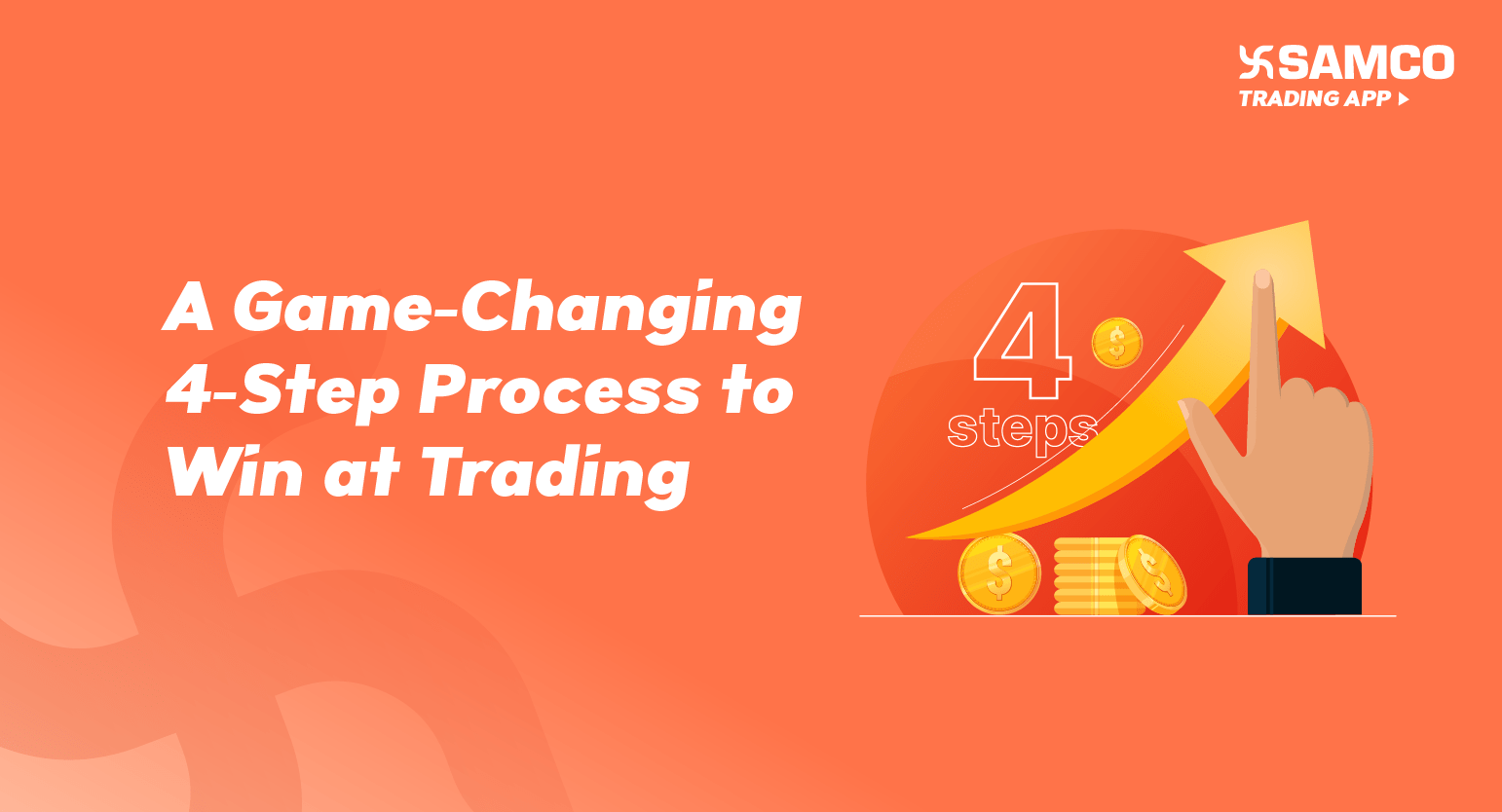
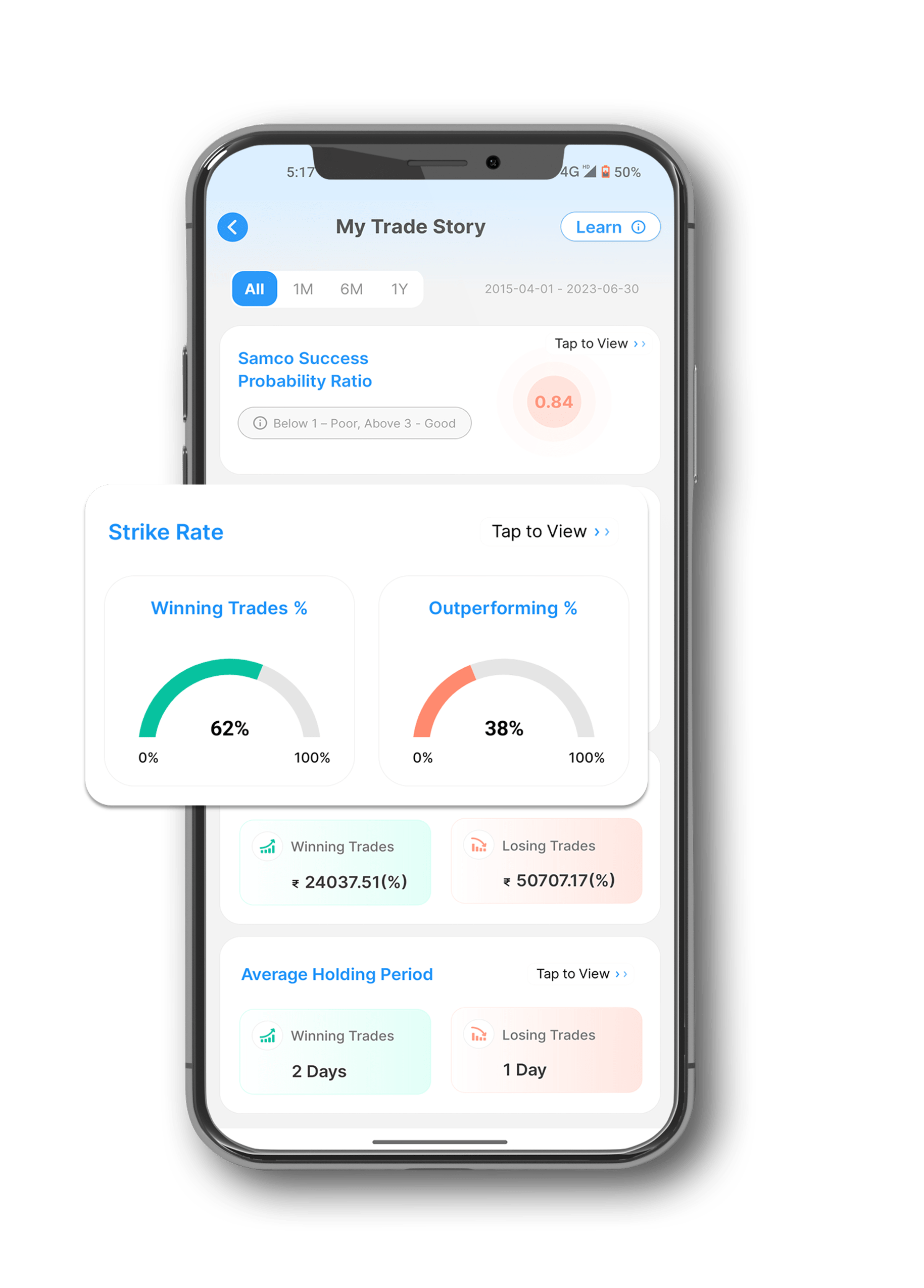
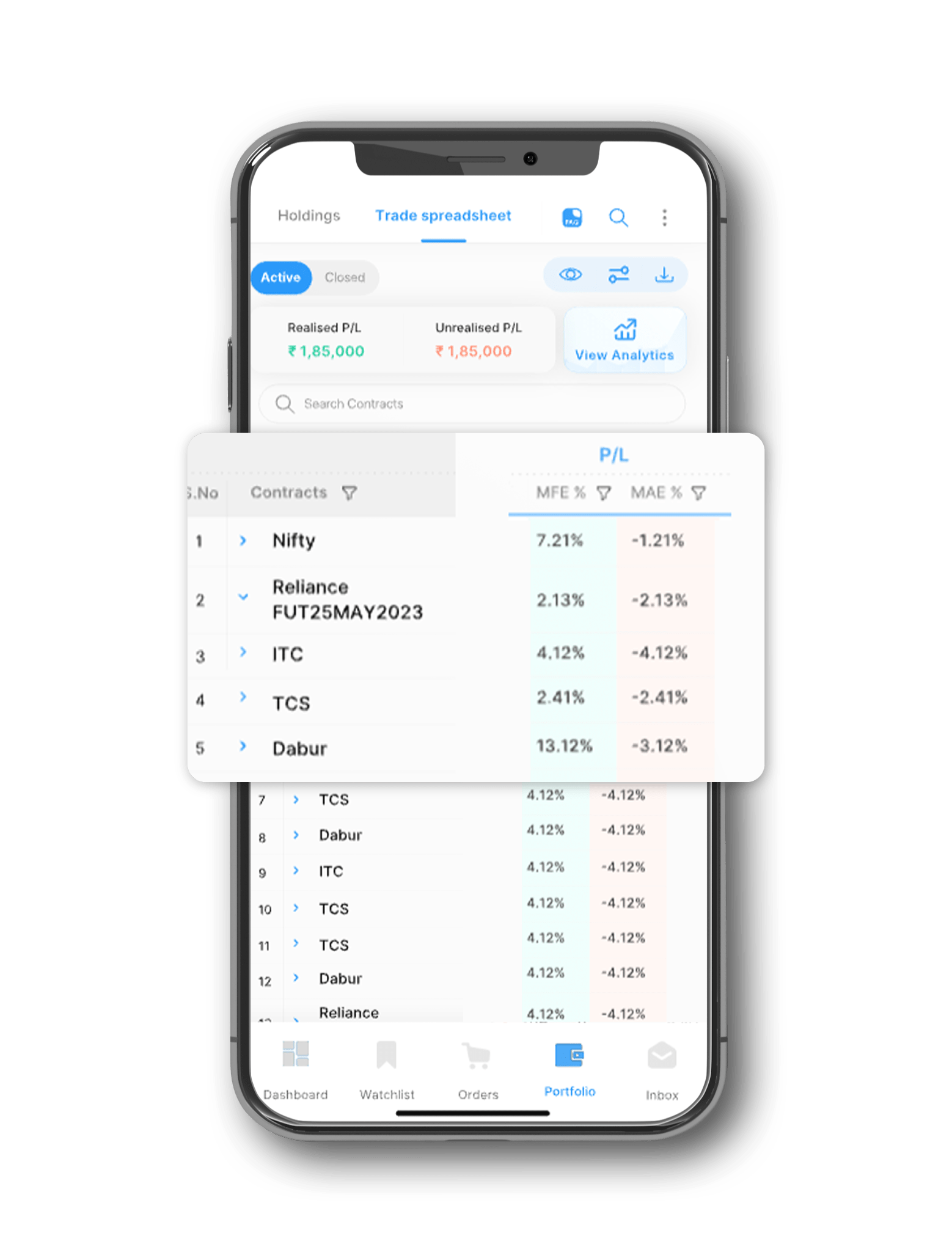
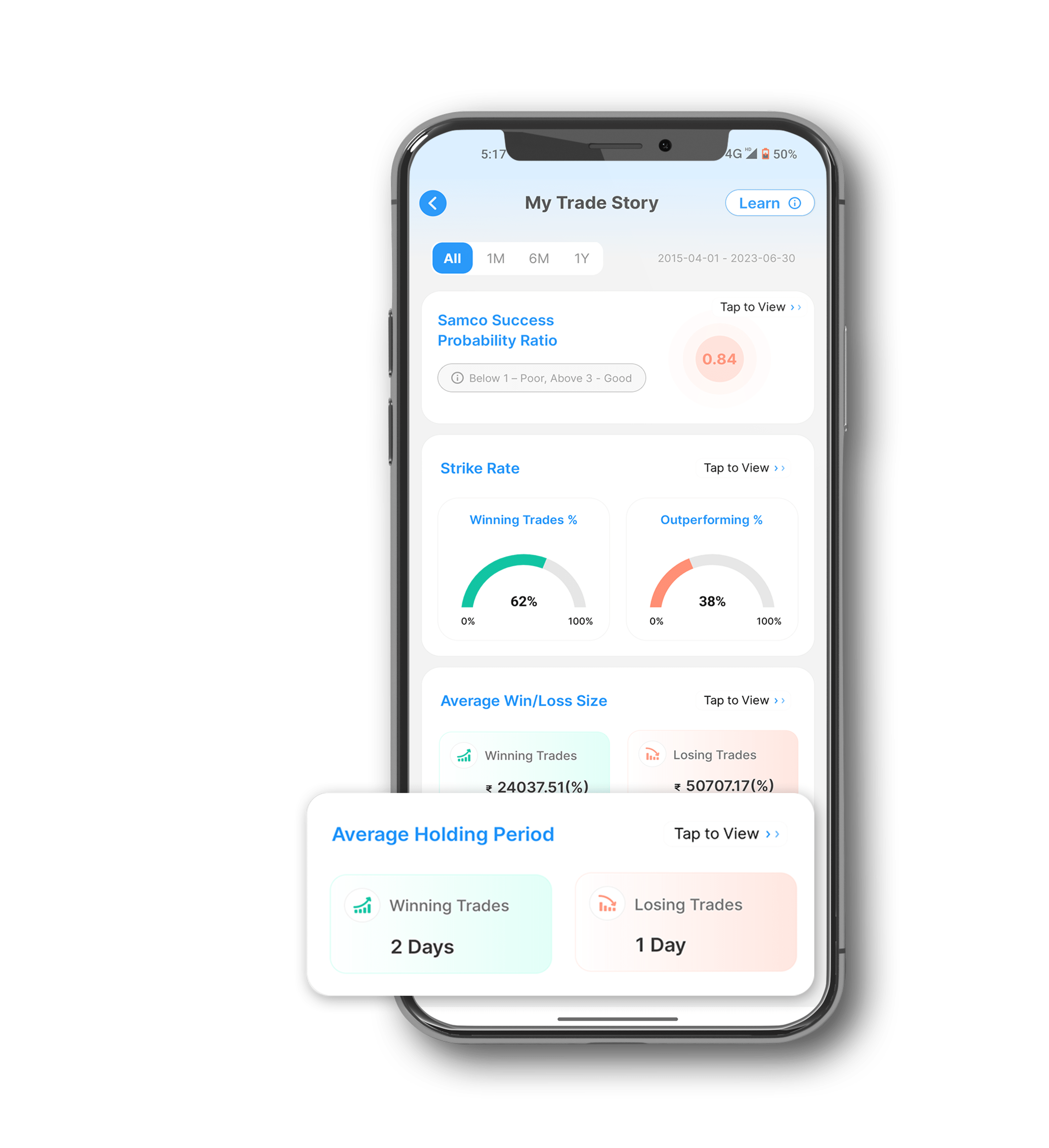
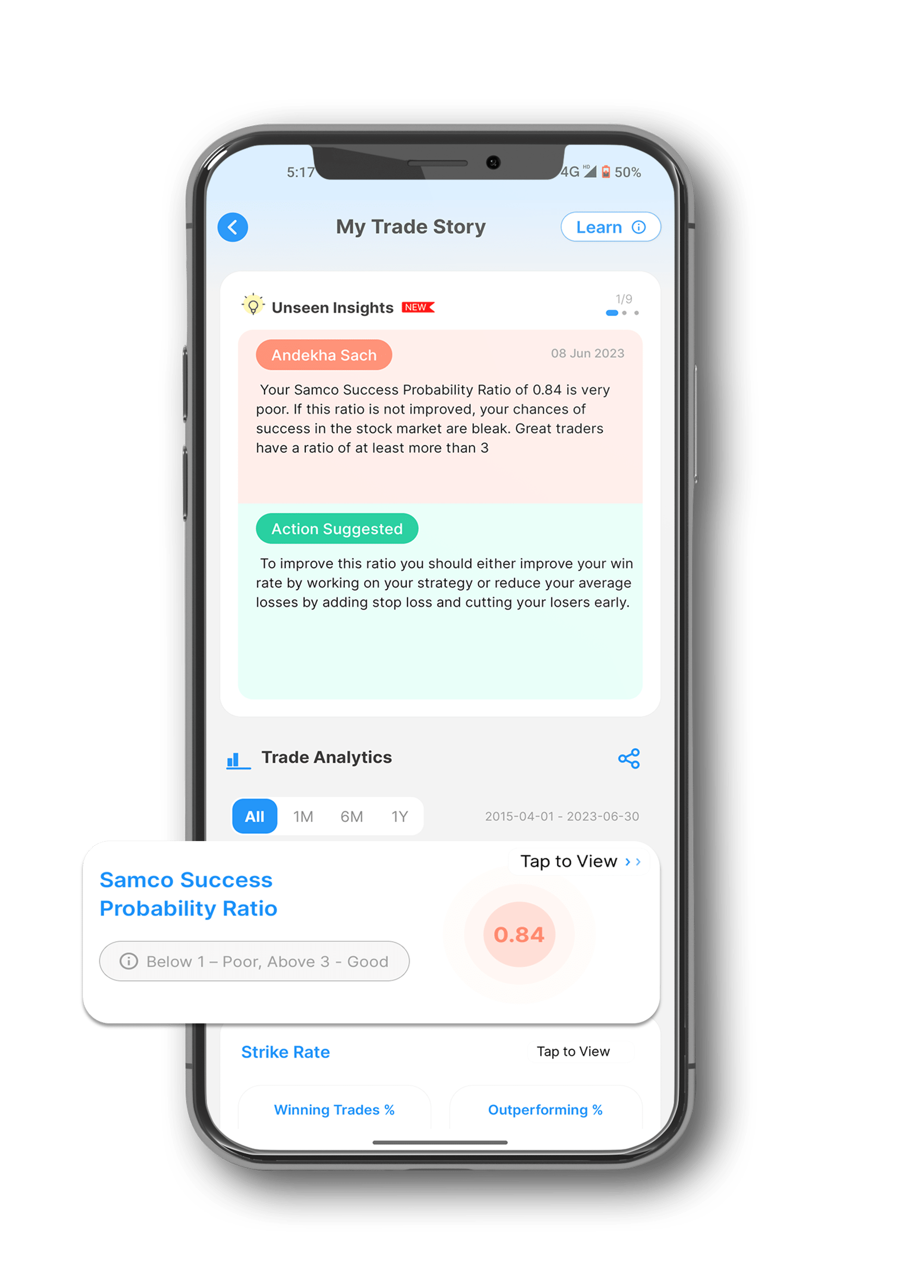




 Easy & quick
Easy & quick
Leave A Comment?